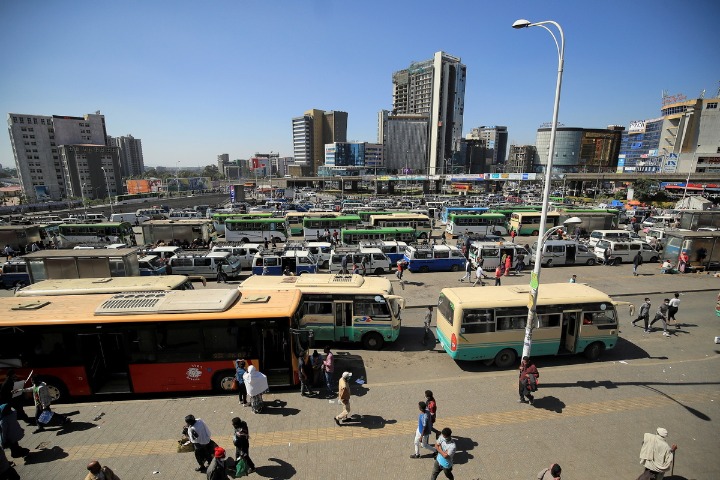Calamities, debt crisis, growth: prospects – I – Opinion

Natural disasters such as floods can have adverse effects on growth as they depress both supply and demand and require substantial resources to mitigate the negative consequences for economic activity.
The immediate challenge for Pakistan now is an emerging food crisis, with millions of acres of farmland destroyed. Several hundred thousand people are at risk of hunger and food shortages are expected to increase. The recent floods will therefore play a role in worsening food price inflation, which already remains high due to higher demand and a fixed supply.
In the medium to long term, rehabilitation and reconstruction expenditure could cost around billions of dollars, but it remains to be seen up to what percentage the government would provide financial support for construction efforts.
We can be certain, however, that increased spending will further exacerbate the government’s budget deficit and debt, with the shortfall likely to be made up by higher levels of borrowing. Pakistan may have to take on even more debt to finance relief and construction efforts caused by the recent floods.
According to World Bank estimates, public debt increased by an average of 2.3 to 3.6 percentage points in the three years following a natural disaster compared to unaffected economies.
A threshold between 75% and 100% of the public debt-to-GDP ratio has been shown time and time again in numerous studies conducted by leading research institutes and academics to have negative or significant effects (or both) on the growth rate of an economy.
Pakistan’s outlook is already worrying as its public debt-to-GDP ratio hit 75% at the start of FY23 well before the flood disaster. Furthermore, Pakistan’s higher debt levels are not just due to more borrowing, but also to currency depreciation which, upon revaluation, increases the external debt payable.
But when is debt a burden on the economy and why? Beyond the threshold issue, the empirical evidence overwhelmingly supports the view that large public debt has a negative impact on the growth potential of an over-indebted economy. In many cases, this impact becomes stronger as the debt increases. Moreover, even in countries considered too indebted, adjustment costs can vary considerably in the form of two types of distortions that are created in the economy as a whole.
Increasing debt can directly distort the economy by creating suboptimal transfers:
Public spending by accumulation of debt automatically increases the purchasing power of certain sectors of the economy, thus increasing demand. The problem is more worrying when the debt is growing faster than the country’s actual debt service capacity. This occurs when debt increases the demand for goods and services without directly or indirectly leading to an equivalent increase in the production of goods and services.
This can happen for various reasons. For example, rising public debt in an economy without excess labor and capacity can finance additional consumption through social benefits such as Benazir’s income support program, or towards the purchase of goods and services to support and provide relief to flood victims, or towards the construction of flood-damaged infrastructure such as houses and bridges.
But any public expenditure that increases demand without directly or indirectly increasing supply by the same amount creates an imbalance between ex ante supply and ex ante demand, an imbalance that must be resolved by implicit or explicit transfers.
For example, simply providing social benefits to people to buy food does not solve the problem of less agricultural production available due to flooding to begin with and therefore higher demand with a limited supply is likely to increase food prices.
These transfers must therefore sufficiently reduce the purchasing power of one or more sectors of the economy so that the ex ante gap between demand and supply is reduced to zero. This transfer mechanism can itself distort the economy. The way excessive indebtedness becomes a problem is when these transfers negatively affect the economy.
For example, if transfers take the form of high levels of inflation or financial repression, they can increase business uncertainty and distort economic activity. If they take the form of tax hikes, they can undermine what economist John Meynard Keynes has called “the animal spirit” and reduce investment in risky but productive sectors of the economy. Or if they lead to trade deficits, they can force wage suppression and so on.
Rising debt can indirectly distort the economy by incurring financial distress costs:
Rising public debt can also indirectly harm economic growth. When there is sufficient uncertainty as to how the real costs of debt servicing will be distributed through the explicit or implicit transfers described above, the debt may cause various sectors of the economy to change their behavior in such a way as to protect themselves from having to absorb the real cost of the debt. These behavioral changes undermine growth, increase financial fragility, or both.
Moreover, this behavior tends to be self-reinforcing. Economic agents are neither stupid nor incapable of learning. As uncertainty grows about how the real costs of debt service should be distributed, there is also growing uncertainty about which sector will be forced to absorb the cost and how; economic agents are therefore likely to modify their behavior in order to protect themselves.
(To be continued)
Copyright Business Recorder, 2022





![[Press release] Debt crisis: a failed G20 summit](https://www.cadtm.org/local/cache-vignettes/L710xH373/f0bd231bf33e0619051e008da75a42-274d7.jpg)
